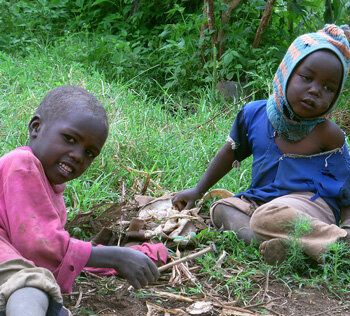Two things stand out about Lonah Koech's seven children: In a village where many struggle with daily needs like water or school fees, all of these children are covered in a thin layer of dust, and almost none of them are wearing shoes.
Elsewhere, no one seems to be caked in the same paling gray-brown soot, and everyone is wearing shoes.
But some aspects of domesticity like footwear and bathing are too costly for the 34-year old mother and her husband Wilson Kipkoech Cheruiyot.
The family of nine lives in Moricho on a seven-acre plot they share with Mr. Cheruiyot's mother and three brothers. Between the five homes, they farm maize, beans, and other crops for "domestic use," which is a polite way of saying their fields give them enough food to eat three or four months a year.
"In this country, we depend on rain," said Ms. Koech, standing in front of her patch of yellow maize. "If there is no rain, there is no hope--no hope for getting food."
Their only source of income is labor. Mr. Cheruiyot works as a hired hand, plowing neighbor's fields whenever a contract is available. Work pays 100 sh for the day, and when he works, they can eat. The family goes hungry often.
The children are in school. At 15, the oldest is in sixth grade. The youngest is just 10 months old. Lonah, who had to drop out of school at standard six, expects her children to be properly educated.
"That is what we hope for in the future--educated, healthy, and better shelter," she said. "A better life for them through schooling."
In contrast, their current living conditions are among the worst in the area.

The children get sick often--pneumonia, malnutrition, malaria--and unlike many others, the family home has a thatched roof.
A small structure bisected by a thin mud wall about seven-feet high, their house has two dirt-floor rooms, a common area with a traditional stove and a dark bedroom with a small mat. Whatever meals Lonah Koech is able to prepare are cooked in the former, and while some of the children live with their grandmother, most of the family sleeps in the latter.
After 12 years of use, the house is beginning to show signs of decay--cracked walls hit by years of rain and a hole in the roof right above the bed. Leaks and chiggers have become a routine problem. But when asked about the hovel dwelling, Lonah Koech shrugs.
"This is all we can afford," she said. "We are happy, comfortable because we don't have any other option.
